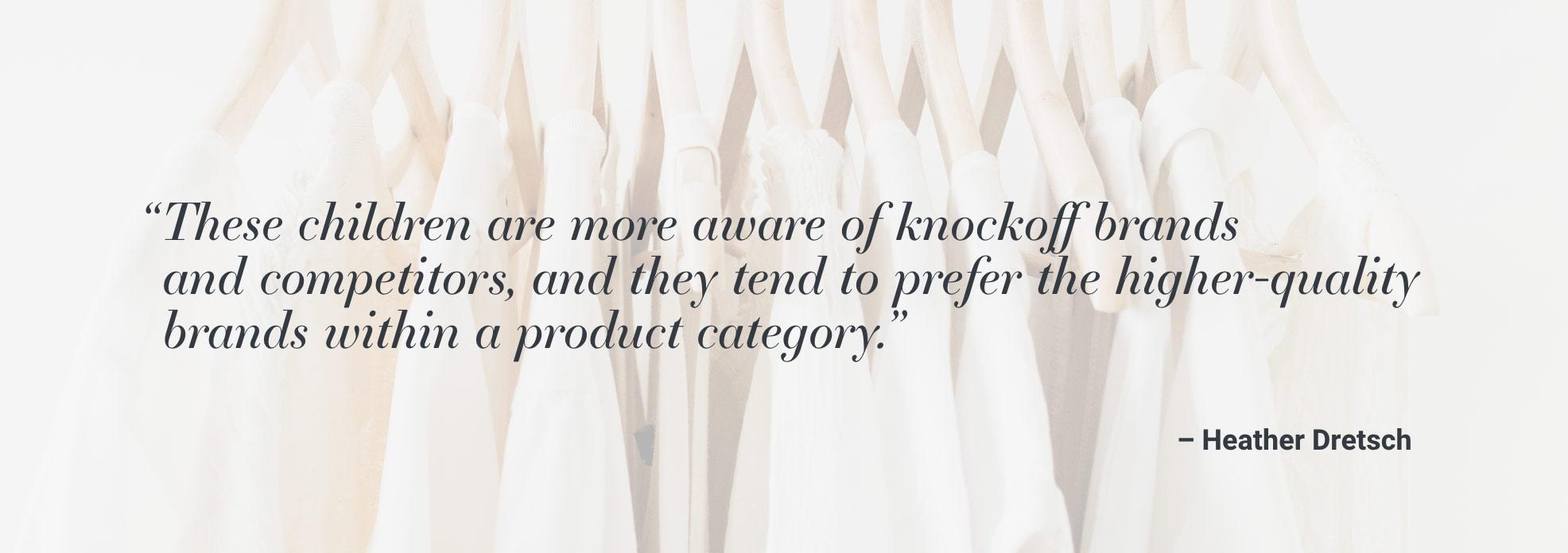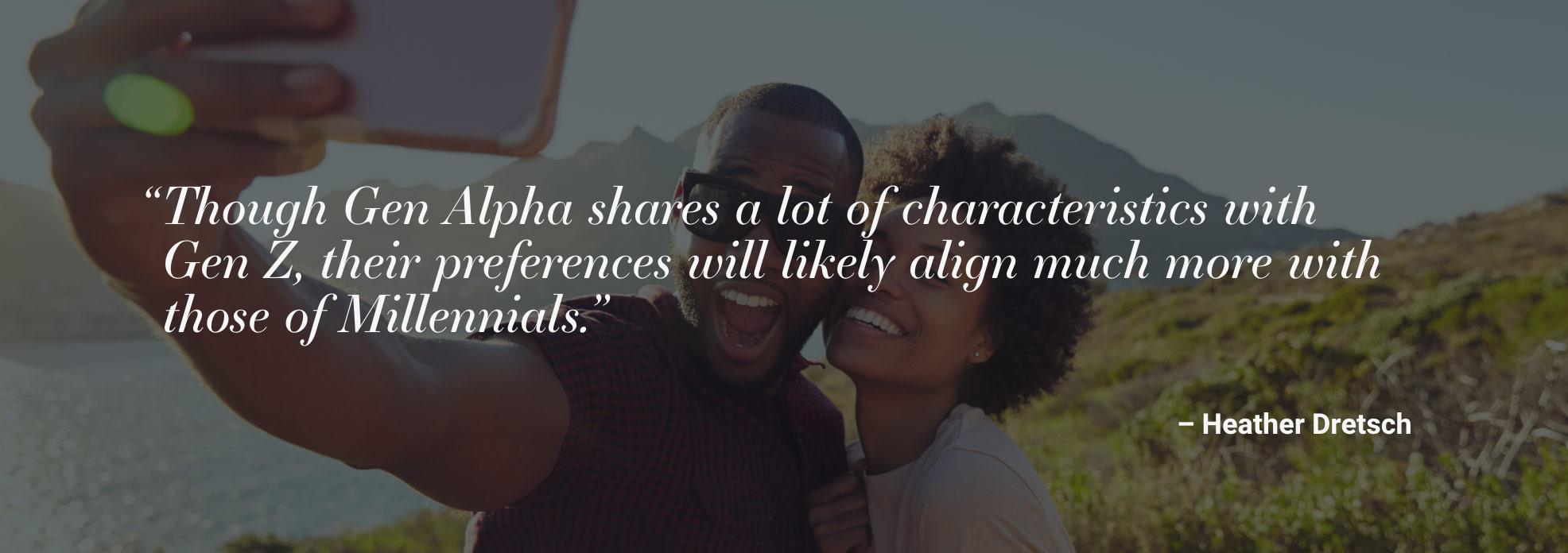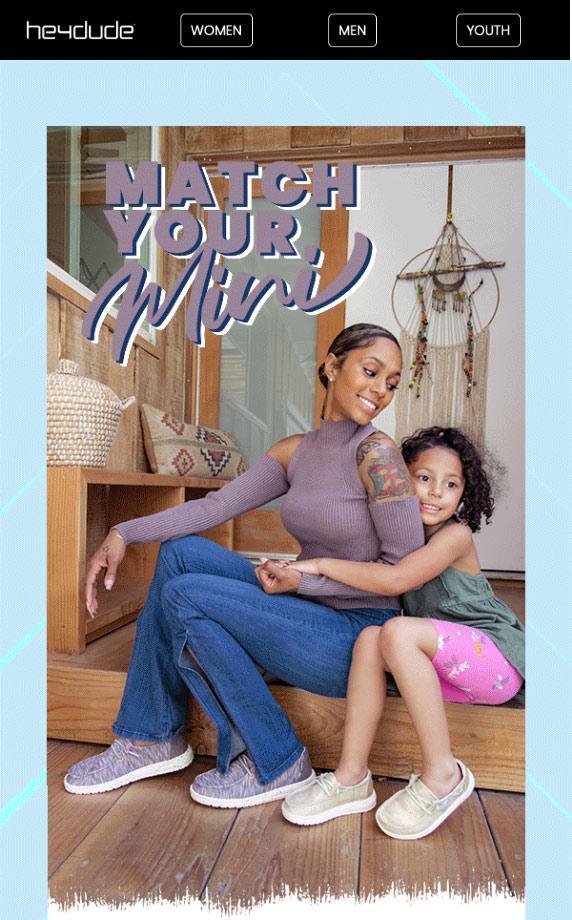Generation Alpha is a pint-sized version
of their parents – on steroids
As marketing and media move closer to a world without third party cookies, we’re all being forced to reevaluate the ways in which we’re building and executing against our audience data. But while the methods may be changing, the goal remains the same: To ensure we continue to reach the right people with the right message in the right place at the right time.
There’s a new kid in town, and her name is Alpha. She’s a confident social butterfly who’s had the world at her fingertips since she was born. She’s never known a world without screens but is also quite comfortable being the focus of attention – with parents who are involved in her every move and make sure she has everything they can afford.
Sounds like a brand marketer’s dream, right? Alpha and her friends (roughly 2+ billion of them by 2025) have already started making brand decisions based on what they’ve been taught by their parents. And while they’ve already started to impact their parents’ purchasing through their brand loyalty, they’ll be making these decisions with their own money as they grow older.
Despite the constant evolution of digital technology, first-party, second-party and third-party data still present viable, valuable opportunities for smart advertisers. But the specific strategies and tactics employed to reach consumers all depend on which party they’re “attending.”
The largest generation in history
The progeny of Millennials, Gen Alpha is on track to become the largest generation in U.S. history, with the greatest spending power and some very, very high expectations. And, while some argue that the name “Gen Alpha” may not stick – as coined by Australian generation expert Mark McCrindle – it’s already common vernacular among marketers (and almost everyone else). In fact, it’s the term I Googled to do my research for this blog and delivered 621,000,000 results.
Like their Millennial parents, these “Mini-Millennials” (born 2010–present) are extremely brand conscious and used to getting the best option for anything. Instantly. As I pointed out in a previous post, Gen Z-ers are also into instant gratification, but they’re not brand loyal; often going for the best deal or the newest shiny thing they see on Instagram or TikTok. Gen Alpha, on the other hand, are highly influenced by their parents, who have proudly raised them with the very best of everything – or the desire to acquire it. And brand loyalty now begins manifesting itself at the tender age of three.

Remember how we used to accuse Millennials of being the spoiled brats of Baby Boomers? How that post-war generation raised their kids with an “everybody gets a trophy” mentality? Well, it’s no surprise that history repeats itself and Millennials nostalgic for their childhoods now want to give their children even more than they had. But they also want their kids to play with the same toys they grew up with – like Barbies and Legos – and place a premium on playing together.
Is this why parents are so important to Gen Alpha, while Gen Z barely notices theirs are there? Yep. But there’s another key factor in play, thanks to the pandemic: While Zs were sitting in their rooms, surfing social media, Alphas were spending time with their parents in the kitchen learning to bake cookies or in the game room building a Lego castle. Now that we’re all coming out of hiding, Millennials continue to integrate themselves into their children’s lives. They want to teach them life skills and the importance of family. They want them to drive the mini-Cadillac Escalade down the sidewalk, because they drive the full-size version down the street.

Remember: Gen Z was raised by Gen X, and while Gen X basically raised themselves and couldn’t wait to move out (Google the term “latch-key kids”), Gen Y Millennials were coddled to the point of never wanting to leave until they got married or found a partner/friend to satisfy their social hunger. As an Xer myself, I have to say I’ve made it a priority to be here for my kids whenever they need me…but I never got a trophy for that or for just participating in anything else.
Gen Zs are definitely tech savvy and demanding of their favorite brands but as stated above, their brand loyalty isn’t carved in stone. They go with what feeds their self-expression. They want what they like right now (which could change in an hour) or what someone on TikTok tells them they should like. And they would never, ever wear a matching outfit with their parents or want to drive the same car.
Five key traits of Gen Alpha
Reaching and influencing Gen Alpha
So, how do you become ingrained in the mind of a three-year-old and start building brand loyalty? In a nutshell, speak directly to their gatekeeping Millennial parents first. As all marketers know, Millennials are information-seekers when it comes to everything and anything they buy for themselves or their kids. From food to footwear, they want the best, safest and highest quality they can afford. Gen Alpha will see this throughout their childhood and get used to reaching for the best.

Brands like Hey Dude shoes already get the importance of the “Mini-Millennial” and are putting the strategy to good use. Check out this email from early May – which actually animated quickly through four different mom/daughter scenarios to deliver consumers to mom/daughter-specific products.
“Gen Alphas are the most materially endowed generation ever.”
– Mark McCrindle
In summary, it’s critical that we, as marketers (and society as a whole), adjust our collective expectations of this new generation. While we could argue that Zs, Ys and Xs all spend too much time in front of screens, Alphas were born into it. And if their days include device-packed hours of YouTube and social media, what is all of this exposure doing to their attention span?
According to Psychology Today, “the more we value instant gratification, the more likely we are to be distracted from longer-term, more meaningful goals.” From fast food consumption to unbridled online shopping, a lifetime of training our brains to seek instant gratification can result in plenty of unhealthy habits.
A recent report from BabyCenter also indicates nearly 80% of Millennial moms aged 18-44 say it’s “important” (read as: they feel pressured) to be the “perfect mom.” They all say that parenting is more “competitive” today than it used to be. Of course, it is! Because every activity, every organic meal, every nature walk is voluntarily displayed on social media for public judgement and peer comments.
As Gen Z starts producing offspring, we’ll see where these numbers go. But in the meantime, it’s imperative that we recognize our best prospects for who they really are, relate to them in ways that respect their values and feelings, and guide them into experiences that reward their loyalty. Simple, quick-read messaging and visuals, high-quality products and intuitive mobile experiences that speak to their savvy confidence will go a long way in capturing the attention of the largest generation ever.
For more on millennials and brand loyalty, read Robert Allan Paul’s blog We’re All Millennials Now.


